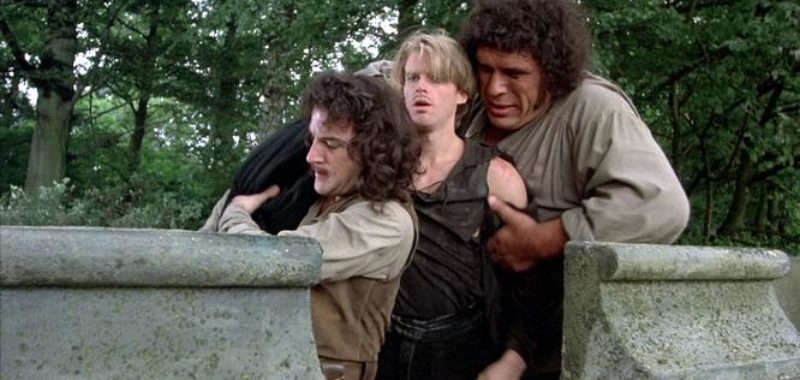The 1987 sleeper hit turned cult classic, The Princess Bride, is a fairy tale about true love, replete with pirates and sword fights, a damsel in distress, and the delight of unexpected friendship. It’s also a master class on high tech marketing strategy.
Let me explain. No, there is too much. Let me sum up.
Our heroine, Buttercup, is about to be forced into marriage to the noxious Prince Humperdinck. Her True Love, Westley (aka the Dread Pirate Roberts), along with his two pals — expert swordsman Inigo Montoya and the affable giant Fezzik — must devise a plan to overwhelm 60 armed guards, rescue Buttercup before she says “I do,” kill the Six Fingered Man (explanations of this character will have to wait for another blog post, but for the moment, this meme should suffice), and escape with their lives.
Westley attempts to design a strategy to win the day. He starts by asking, “What are our liabilities?” and gets a disheartening answer. “And our assets?” By all measures, they are inadequate to the task.

Westley has been “mostly dead” all day, but that doesn’t stop him from devising a strategy to save his True Love.
Musing out loud, Westley suggests that if he just had a wheelbarrow and a holocaust cloak then they would have a fighting chance. And since this is a fairy tale, the wheelbarrow and cloak are acquired at once and (SPOILER ALERT if you are the one person on earth who’s never seen this movie) our heroes save the Princess Bride and ride off into the sunset.
What does this have to do with high tech marketing?
Good marketing strategy absolutely begins with taking stock of assets and liabilities. But it doesn’t end there. Great strategy goes deeper. It imagines a variety of possible plays and then works backward, asking “what do I need in order to deliver the results I really want?” Viewed through that lens, you might realize you have (or can create) assets that you hadn’t considered before — or liabilities for that matter — that change the game entirely.
Too often we take our assets and liabilities at face value and then conflate strategy with rolling out a predictable set of deliverables along a timeline. In the case of a product launch, for example, we receive a feature set from product marketing (assets) and then create a “strategy” that looks something like this:
- Press release, check
- Customer references, check
- Spokespeople, check
- Brief analysts and press, check
- Write and publish blog post, check
- Host event, check.
We neglect to ask (metaphorically), “What’s my wheelbarrow? What’s my holocaust cloak?” What are those assets beyond the obvious that, if I had them (or something like them), I could do something totally different with this company launch, product introduction, demand gen campaign, news hack?
Figuring that out is the hard part.
Ideally, this is where I’d introduce a series of bolded sub-heads that tell you the Three Things You Can Do to figure out a great marketing strategy. But I can’t. The most I can say is …
I can’t give you a listicle for marketing strategy because there is no formula, and anyone who says differently is selling something.
Great marketing strategy requires that you think — a lot — and preferably creatively. Read too, voraciously, so you know what’s happening in your market, what your competitors are up to, and where the gaps are. Talk to colleagues you wouldn’t normally engage with — your kernel engineers, a chief architect, or a QA team for example. Grab your product marketing peers and take some engineers to lunch with the goal of seeing your technology through their eyes. Chat with your CFO or controller and ask a million questions about how revenue is recognized for your products, what kinds of business models did your company reject before landing on this one, and where’s the big money in your industry. Spend a couple hours eavesdropping on inside sales conversations. It’s amazing how much a smart BDR can tell you about your ideal customer, what they really care about, what they think of vendors in their industry.
The point is this: as you really dive deep into your business and industry, acquiring various points of view along the way, you build for yourself a latent set of assets and liabilities that you can draw on as you design marketing strategy. You create, in effect, a warehouse of wheelbarrows and holocaust cloaks in your mind’s eye that you can pull out at any moment and use them to free the princess, defeat the enemy, save the day.
And if all that fails, I leave you with this parting piece of advice:











